These posts are not for foraging. They are intended for entertainment and intellectual satisfaction only. These posts are not a field guide nor comprehensive in any way - their accuracy is not assured in any way. Do not eat wild mushrooms unless you are a professional, have substantial professional assistance or have a wealth of personal experience with a specific species. Do not make any foraging decisions based on these posts. To do so could be dangerous or life threatening.
These Posts Contains No Information Regarding Edibility Or Toxicity
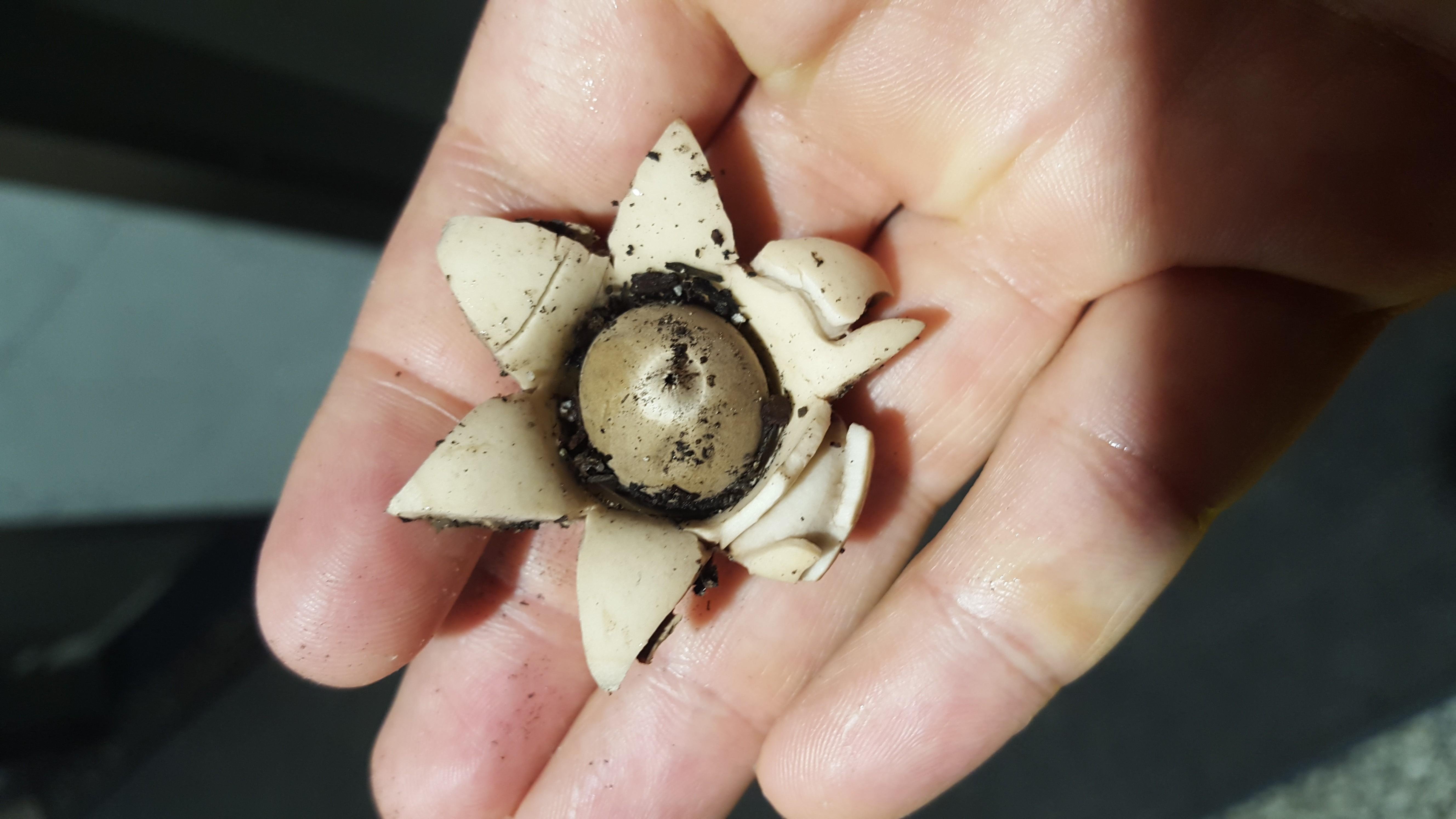
Earthstars, generally the family Geastraceae, are some of strangest mushrooms out there
At the core of most members of the Geastrum genus is usually what amounts to a common puffball: A small ball of gleba, or flesh which eventually turns brown and into spore mass, which then ejects spores into the air.
What makes earthstars so awesome are the apparently extraneous additions to the puffball equation - namely the outer carapace which, when ready, splits open and expands dramatically.
Although a variety of earthstars are fairly ubiquitous, I have never encountered one until today. As always for some reason, I found this on the way to the hardware store near my apartment, living in the small ecosystem under a street tree.
These little guys were hiding in plain view
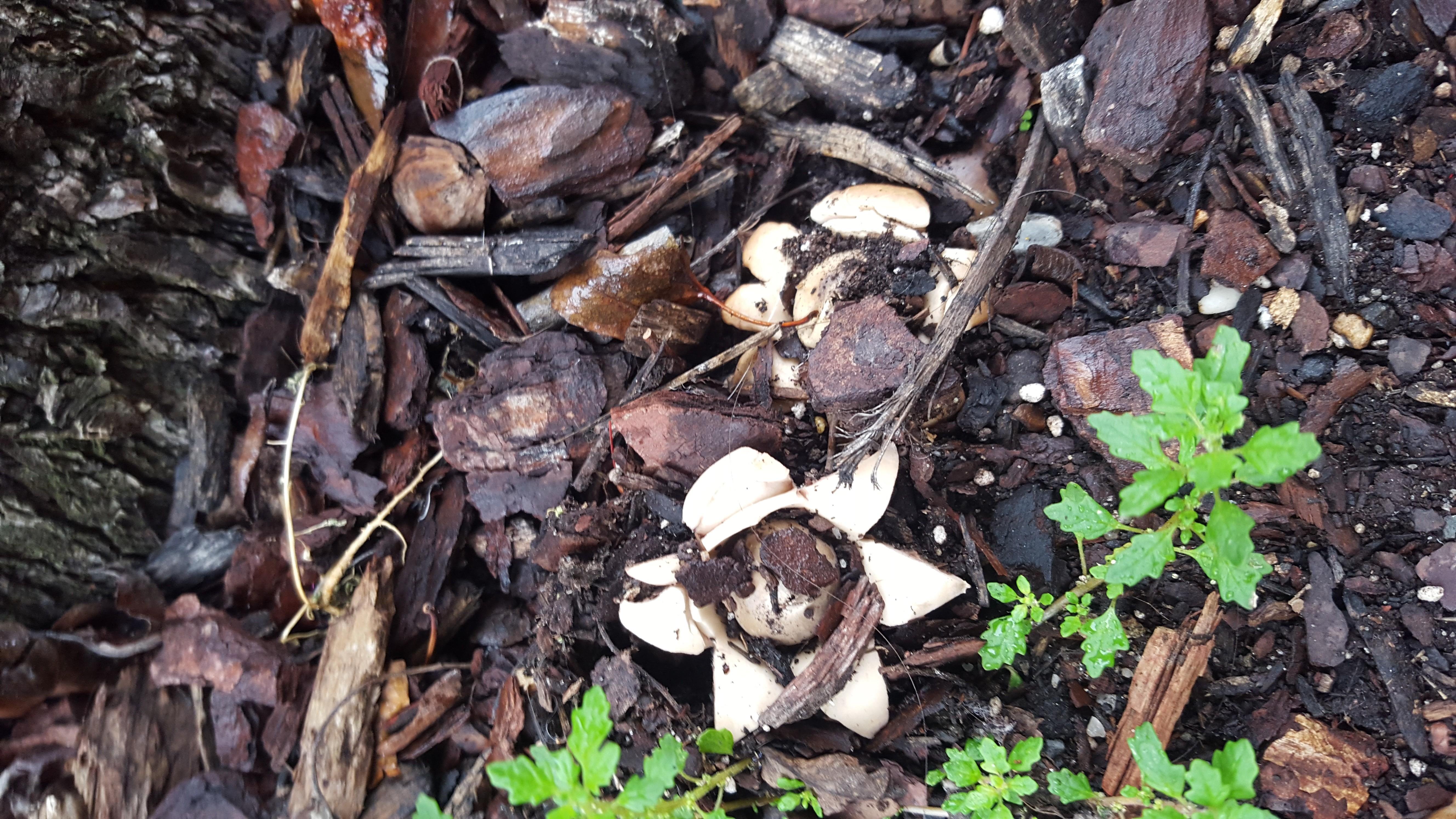
Two earthstars sittin under a tree.
Both in topsoil or thin mulch - in truth a less well defined melange of decomposed organic material accumulated on a NYC street. Both fully sprouted, their outer carapaces stretching, tendril-like, in a vaguely disconcerting starburst pattern.
Bending down to pick one up, it didn't resist at all. The whole structure came up together.
Take a look at the underside
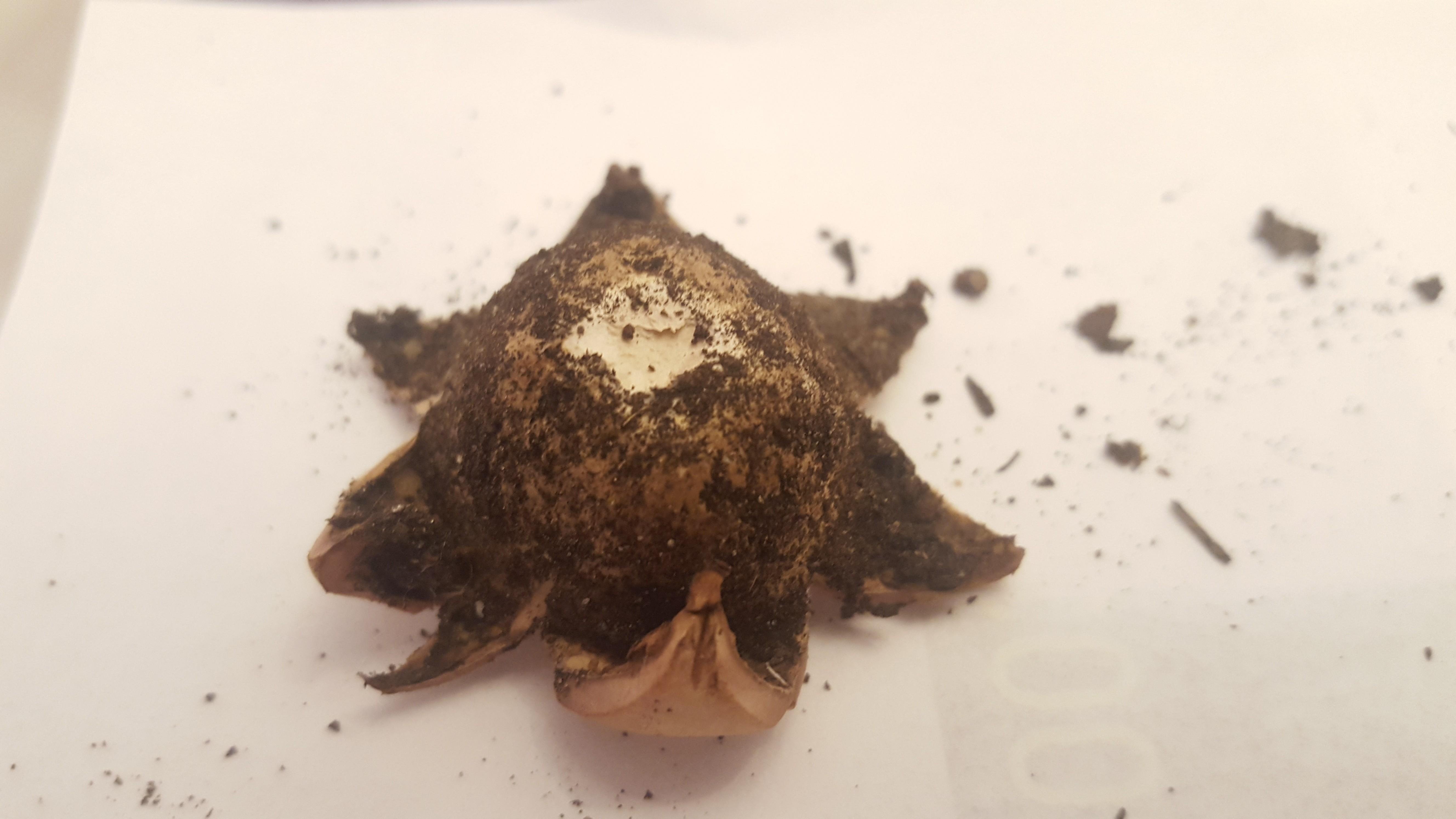
Covered all over in a fine layer of dirt
I wanted to get in there and brush it off, get a clearer look at the underbelly, but I had a fairly busy day aside from mushroom examination. Plus - and perhaps more importantly, I know all the awful stuff this mushroom must be covered in and didn't relish handling it too much. The lesson here: I need some gloves.
Unfortunately, the underside's dirtiness may be a confounding factor in a definitive identification, at least according to Micheal Kuo's species page. Kuo points out that G.saccatum is only partially connected at the base to the ground. As a result, G.saccatum should not be covered in detritus all over its underside.
Now, in part at least, Kuo seems to get this information from an old writing on the species by Alexander Smith in 1951, wherein Smith mentions the lack of detritus on G.saccatum.
Let's leave this particular trait to the side for the moment and press on.
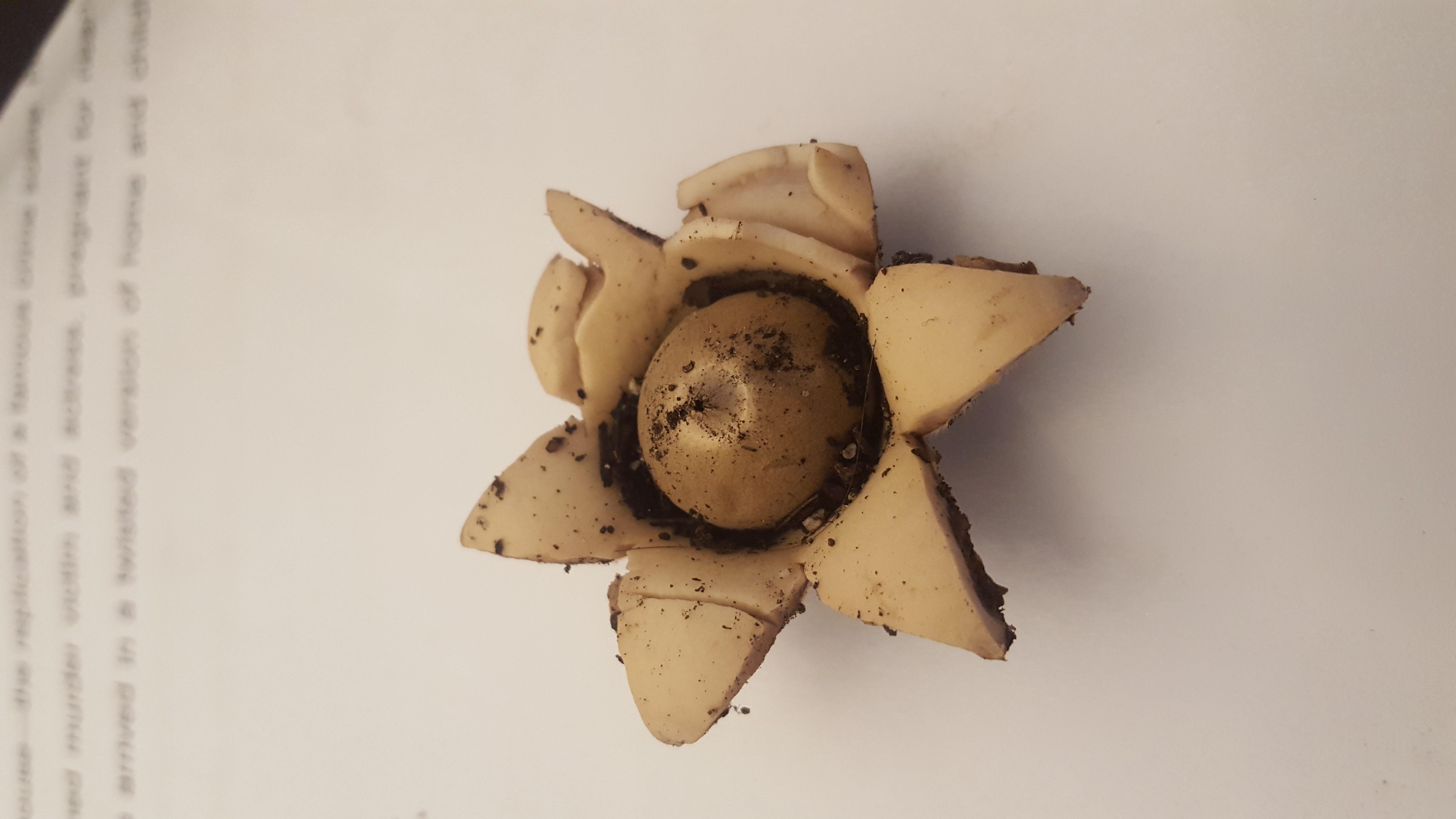
Here we are, up close and personal
See the volcanic looking central hole in the central mass? When the mushroom is agitated by wind or contact spores are ejected from that hole.
Earthstars can have a number of spore ejection holes depending on the species. G.saccatum only has one. But so do others, like G.triplex and G.fimbriatum.
However, G.saccatum is known for the clear ring around its central hole, which is either raised or depressed. If you look at the picture above you can see this ring very clearly.
Kuo highlights another trait which we need to bifurcate to identify
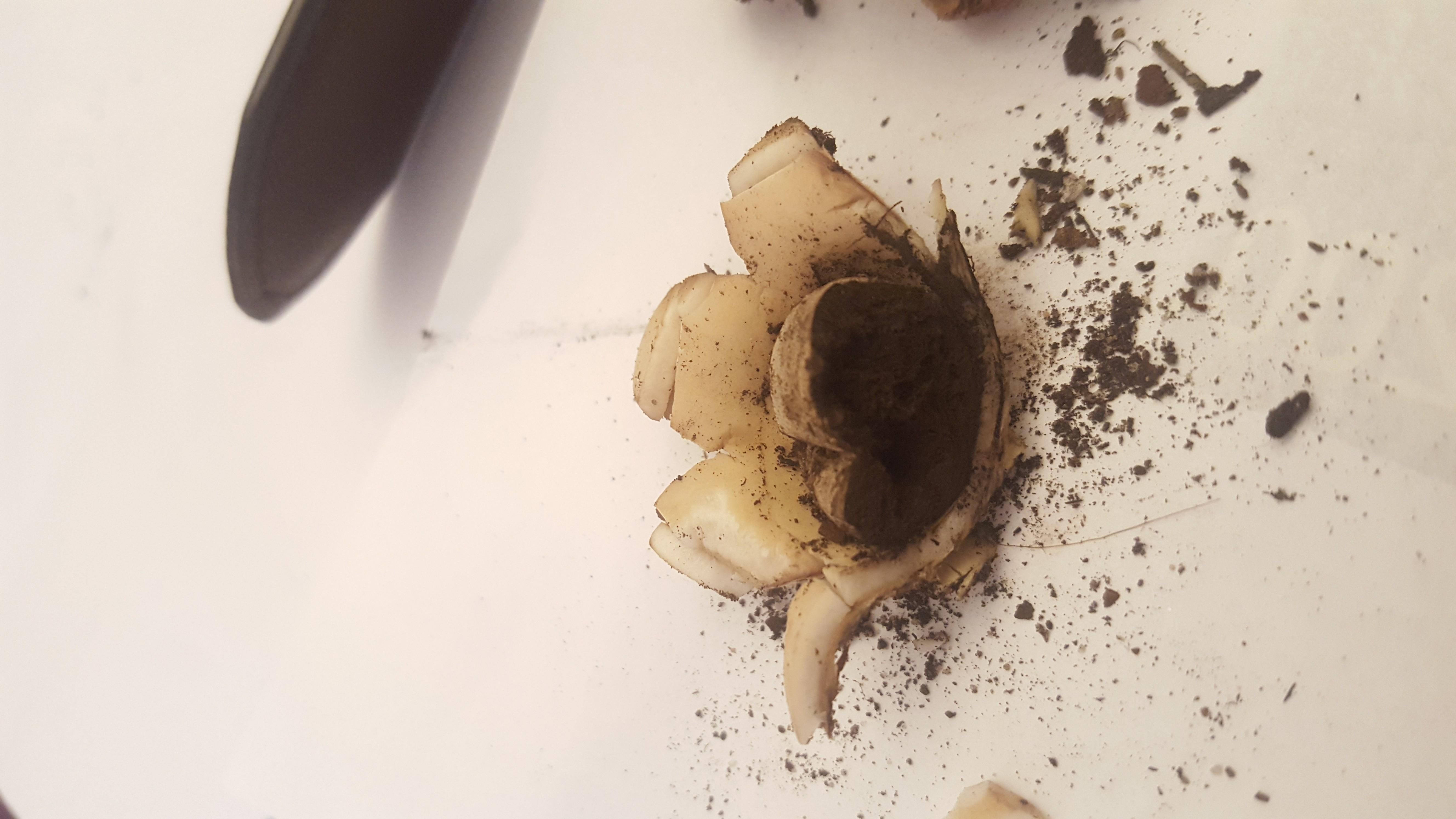
Some Geastrum species end up with the central globe propped up by the carapace claws.
Or have the spore mass sitting on a "pedestal" of sorts. G.saccatum on the other hand is supposed to sit directly on the bottom carapace layer, "as though in a bowl."
I believe the above photo depicts this very clearly, as does the mushrooms general appearance in the other photos.
Everything is pointing to G.saccatum
- 2-5 cm size
- Appropriate color and tendril number
- Clear ring around central, single spore hole
- Growing in the right habitat
- With the spore center sitting as though in a bowl made of the carapace and tendrils.
The only problem is this issue of connection to the ground and what should be a lack of detritus on the mushroom bottom. However, I don't think this scuttles the ID in this case.
First, look at that upside down mushroom again. The whole thing's covered with dirt, except for a clean small section nearly in the bottom center. This would support the mushroom being connected by that single point and having been torn by me when I pulled it up.
Second, the circumstances of this mushroom's habitat should also be considered. This is a busy city street with a ton fo foot and dog traffic, and after two days of rain. There's dirt not only all over the bottom, but on top of the mushroom as well, which means someone or something agitated that dirt onto the mushroom post-tendril-spreading.
Since the dirt on the specimen is the only remaining hesitation, and since it has a clear explanation, I feel very confident that this is actually G.saccatum.
It is also super cool and weirdly gross. Plus it raises interesting questions about the evolutionary benefits that inure to it from utilizing its bizarre, "Alien"-esque carapace. I'm gonna do some research and get back to you on that.
THIS POST IS NOT INTENDED FOR FORAGING PURPOSES AND TO USE IT FOR THOSE PURPOSES WOULD BE DANGEROUS. DO NOT HUNT WILD MUSHROOMS WITHOUT RELYING ON A COMBINATION OF PROFESSIONAL FIELD GUIDES, IN PERSON PROFESSIONAL GUIDANCE, OR IN PERSON GUIDANCE BY SOMEONE TRUSTWORTHY WHO HAS COPIOUS LOCAL, SPECIALIZED MUSHROOM HUNTING EXPERIENCE. FAILURE TO DO SO CAN RESULT IN GRIEVOUS PERSONAL HARM OR DEATH.
Photos Are My Own
Information Sources:
[1]Kuo on G.saccatum
[2]Smith on G.saccatum
[3]Wikippedia on G.saccatum
[4]Kuo on G.triplex
[5]First Nature on G.fimbriatum
